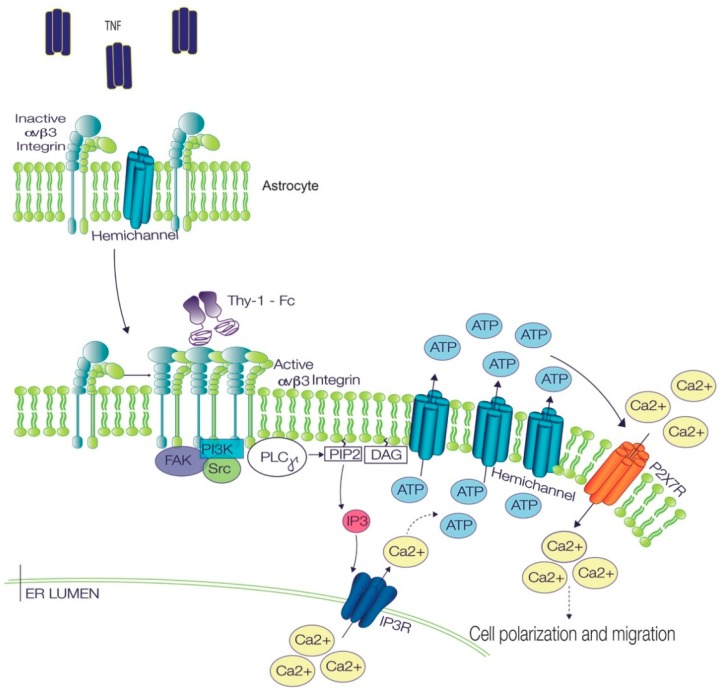Figure 5.
Signaling pathways involved in TNF/Thy-1-induced astrocyte polarization and migration. In astrocytes, TNF treatment induces integrin microcluster formation, increases Cx43 levels at the plasma membrane and prepares cells to respond to Thy-1. Once Thy-1 binds to the integrin microclusters, the receptors oligomerize further, thereby leading to the formation of bigger clusters and integrin activation. The active integrin protein then recruits signaling molecules, such as FAK, PI3K, Src, PLCγ. The activation of the phospholipase generates diacylglycerol (DAG) and IP3, which activates the inositol 1,4,5-trisphosphate receptor (IP3R) to allow the release of Ca2+ from intracellular stores. Increased intracellular Ca2+ leads to the opening of hemichannels, the consequent release of ATP to the extracellular medium, and the activation of P2X7 receptors, which allow Ca2+ entry into the cell. This signaling pathway is part of a more complex chain of events that eventually leads to cell polarization and migration (modified from [5]). Arrows with solid lines indicate proven connections which may or may not be direct. Arrows with dashed lines indicate connections with non-specified/multiple in between steps.

